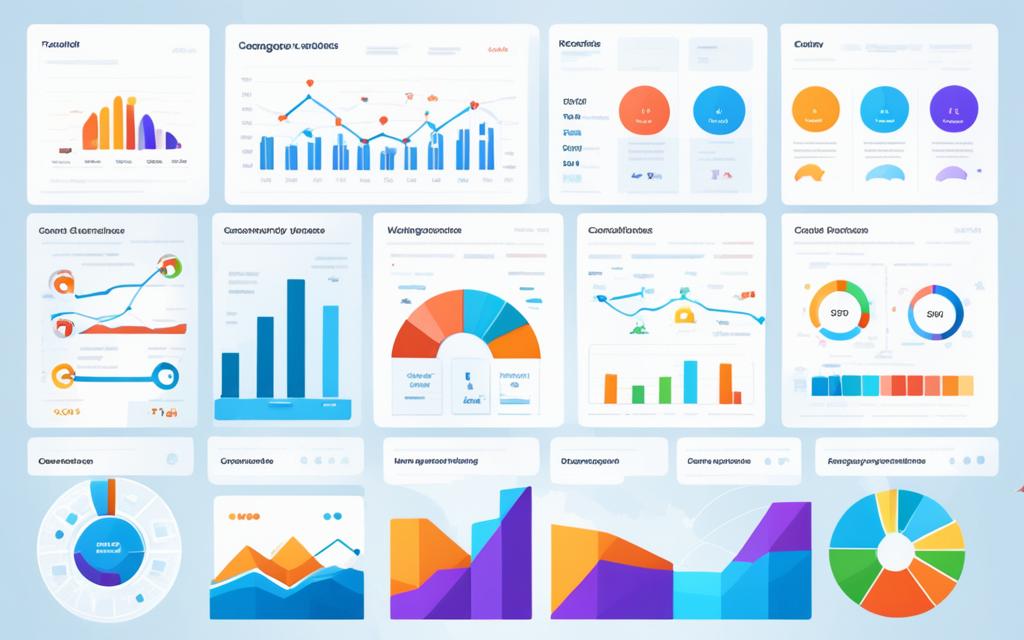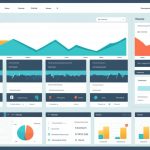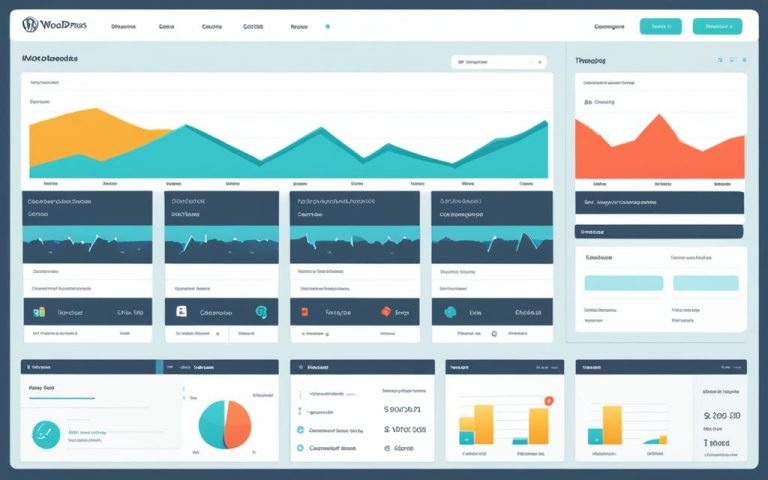What is Google Analytics: Track Website Data
Google Analytics is a powerful platform that allows businesses to track and analyze their website data, providing valuable insights into website performance and user behavior. By utilizing Google Analytics, businesses can gain a comprehensive understanding of their online presence and make data-driven decisions to optimize their digital strategy.
To start tracking website data with Google Analytics, businesses need to create an account and add a small piece of JavaScript measurement code to each page. This code collects important information about user interactions, such as the number of visitors, the devices and browsers they use, and the traffic sources that brought them to the website.
Once the data is collected, Google Analytics processes and stores it in a database, allowing businesses to access and analyze it through customizable reports. These reports provide valuable business insights, enabling organizations to measure the impact of their marketing efforts, identify top-performing webpages, and understand user behavior patterns.
With Google Analytics, businesses can not only track their website’s traffic and performance but also gain a deeper understanding of their audience. By leveraging this data, businesses can make informed decisions to optimize their marketing strategies, improve user experience, and drive online success.
How Does Google Analytics Work?
Google Analytics is a web analytics service that provides comprehensive statistics and analytical tools designed for SEO and marketing purposes. It plays a crucial role in tracking website performance and collecting valuable insights about visitor behavior, helping organizations understand their top sources of user traffic and evaluate the success of their marketing campaigns.
To collect user data and generate meaningful reports, Google Analytics utilizes page tags. These tags are small snippets of JavaScript code that are inserted into each page of a website. They are responsible for capturing data on various user interactions and transmitting it to Google’s data collection servers where it is processed and stored.
The platform offers customizable reports that provide detailed metrics and key performance indicators (KPIs) to analyze website traffic, user engagement, and conversion rates. By utilizing Google Analytics, businesses can assess important data points such as the number of users, bounce rates, average session durations, goal completions, and more, which are essential for optimizing SEO strategies and measuring marketing effectiveness.
“Google Analytics enables businesses to gain valuable insights into website performance and user behavior. By leveraging this powerful web analytics service, organizations can make data-driven decisions, identify areas for improvement, and enhance their overall online presence.”
Benefits and Limitations of Google Analytics
Google Analytics offers several benefits that make it a valuable tool for tracking and analyzing website performance. Here are some key advantages:
- Free: Google Analytics is a free platform, making it accessible to businesses of all sizes without incurring additional costs.
- Easy to use: The user-friendly interface of Google Analytics makes it easy for beginners to navigate and understand the data.
- Customizable metrics and dimensions: With Google Analytics, you can choose from a wide range of metrics and dimensions, allowing you to gather specific insights about your website’s performance.
- Additional tools: Google Analytics provides additional tools for data visualization, monitoring, reporting, and predictive analysis, enhancing your ability to extract meaningful information from the collected data.
However, like any platform, Google Analytics has its limitations that should be considered:
- Data accuracy: Users who block cookies or have certain browser extensions and ad filtering programs may alter the accuracy of the data collected by Google Analytics.
- Sampled data: Reports generated by Google Analytics are based on sampled data, especially for larger websites, which can result in margins of error for smaller segments of data.
It’s important to note that while Google Analytics provides valuable insights into user acquisition data and website performance, it does not provide behavioral insights into individual users.
The Distinction between User Acquisition Data and User Behavior Data
User acquisition data refers to information about how users are finding and accessing your website. This includes metrics such as the number of visitors, traffic sources, and conversion rates. It helps you assess the effectiveness of your marketing efforts and identify the most successful channels for driving traffic to your site.
User behavior data, on the other hand, focuses on how users interact with your website. This includes metrics like bounce rate, average session duration, and goal completions. It provides insights into user engagement, user experience, and the effectiveness of your website design and content.
By understanding the benefits and limitations of Google Analytics, you can effectively leverage the platform to track and analyze your website’s performance, gain valuable business insights, and make data-driven decisions.
| Benefits of Google Analytics | Limitations of Google Analytics |
|---|---|
| Free to use | Data accuracy can be compromised by users who block cookies or use ad filtering programs |
| Easy to use and beginner-friendly | Reports are based on sampled data, leading to potential margins of error |
| Customizable metrics and dimensions | |
| Additional tools for data visualization, monitoring, reporting, and predictive analysis |
Introducing Google Analytics 4
Google Analytics 4, also known as GA4, is the latest version of the web analytics platform. Released in October 2020, GA4 comes with a fresh user interface and a strong emphasis on machine learning to ensure data accuracy. This update brings a range of new features, including machine learning and artificial intelligence tools, deeper integration with Google Ads, customer-centric reporting, codeless tracking capabilities, and enhanced data control for regulatory compliance.
One significant change in GA4 is the replacement of third-party cookies with machine learning algorithms. This shift allows for more precise data insights and aligns with privacy concerns related to cookies. By leveraging advanced machine learning technology, GA4 offers businesses a higher level of accuracy in understanding user behavior and website performance, giving them the power to make data-driven decisions that impact their growth and success.
With GA4, businesses can access a comprehensive set of reports and features that provide deep insights into their website’s performance. These insights allow organizations to understand user interactions, track conversions, optimize marketing campaigns, and uncover hidden opportunities for growth. GA4’s machine learning capabilities enable businesses to uncover patterns and trends that may have otherwise gone unnoticed, providing them with valuable information to refine their marketing strategies and enhance the overall user experience.
FAQ
What is Google Analytics and how does it track website data?
Google Analytics is a platform that collects data from websites and apps to create reports that provide insights into a business. To track a website using Google Analytics, you need to create an account and add a small piece of JavaScript measurement code to each page. This code collects information about user interactions, including the number of visitors, the devices and browsers they use, and the traffic sources that brought them to the website. The collected data is then processed and stored in a database, where it can be accessed and analyzed as reports.
How does Google Analytics work as a web analytics service?
Google Analytics is a web analytics service that offers statistics and analytical tools for SEO and marketing purposes. It tracks website performance and collects visitor insights, helping organizations understand their top sources of user traffic and the success of their marketing campaigns. Google Analytics acquires user data through page tags, which are snippets of JavaScript code inserted into each page of a website. These tags collect data on user behavior and send it to Google’s data collection servers, where it is processed and stored. The platform provides customizable reports that track metrics such as the number of users, bounce rates, average session durations, goal completions, and more.
What are the benefits and limitations of using Google Analytics?
Google Analytics offers several benefits, including being free, easy to use, and beginner-friendly. It provides a wide range of metrics and customizable dimensions that allow users to gather useful insights about their website’s performance. The platform also offers additional tools for data visualization, monitoring, reporting, and predictive analysis. However, Google Analytics has some limitations that can affect data accuracy. Users who block cookies or have certain browser extensions and ad filtering programs may compromise the overall data accuracy. Additionally, reports generated by Google Analytics are based on sampled data, which can result in margins of error for smaller segments of data. It’s important to understand the distinction between user acquisition data and user behavior data in Google Analytics, as each provides valuable insights for marketing purposes.
What is Google Analytics 4 and what are its features?
Google Analytics 4, also known as GA4, is the most recent iteration of the platform. Released in October 2020, GA4 offers a new user interface and a shift towards machine learning for better data accuracy. It includes features such as machine learning and artificial intelligence tools, deeper integration with Google Ads, customer-centric reporting, codeless tracking features, and enhanced data control for regulatory compliance. GA4 replaces the reliance on third-party cookies with a focus on machine learning algorithms to provide more accurate data insights. The platform offers a range of reports and features that help businesses analyze their website’s performance and make data-driven decisions.














